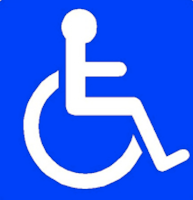Representation
- Representation is the construction of ideas of reality which is presented in the media. To represent something/someone means to portray it in a certain way whether it's negative, positive, true or unrealistic.
- Media texts construct aspects of reality for their own purposes (they mediate reality), and to compete in the media market place. They may be representing a certain group based on their audience in order to draw them in. These representations are mostly based on stereotypes.
- For example a film aimed at teenagers may be representing young people.
Here is an example of the film Kidulthood which represents teenagers in a negative way, although it is aimed at teenagers.
- However, some films may choose
to go against stereotypes in order to give a message to their audience
and try to represent the group in a different way.
Here is an example of the film 'She's the Man' where it shows a girl going against the female stereotype of being girly and wearing dresses and instead takes on the male stereotype of playing sport.
- We analyse the representation of certain social groups and ideas/issues (ideologies)
Gender - Many films will include a representation of gender whether it's a positive or negative stereotype. A common stereotypical representation of male and female characters is showing men as strong and in control and women as weak and a sexual object.

- Age
- Many
films have a representation of age. A common representation is showing
young children as innocent and pure and old people as vulnerable.
Sexuality - Some films may show a representation of sexuality (homosexual, heterosexual or bisexual). The common stereotypical representation of gay men is that they are overly feminine and dramatic, this is often used for humour.
Race - Representation of race in films can hold negative or positive stereotypes. For example, white people may be represented as very posh and uptight as this is a stereotype, and afro Caribbean boys are often represented as violent in films. The representation of religion is also part of this as often people who follow the same religion are grouped together and represented as the same.
Regional Identity - Representations of regional identity very often follow stereotypes. For example people from London may be represented very differently to people from Yorkshire. Londoners are seen as busy and unfriendly where as people from Yorkshire may be seen as more relaxed and welcoming.

Disability - The representation of disability (both physical and mental) is becoming a lot more common in films and the media.
Social Class - Both working class and middle class are represented in the media. The common stereotypes is that middle class people are more posh and have different values to working class people, and that working class are more culturally deprived. For example in Shameless the family are a stereotypical working class family.
- These groups are all represented through different techniques. These techniques are Camerawork, Sound, Mise en Scene and Editing.






All your links break Mae - check with Ollie to see what the problem is - i would like to see the videos.
ReplyDeleteGood glossary Mae
ReplyDeleteLevel 4